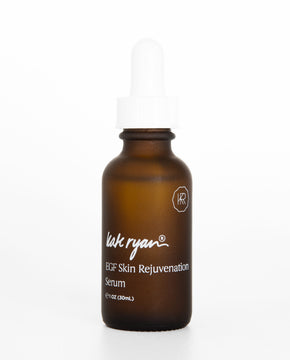Microcurrent facials, occasionally referred to as microcurrent treatments or microcurrent therapy, increase cellular activity in the face, which helps to tighten and smooth connective tissues and make the face look more rejuvenated. A microcurrent facial is known as a non-invasive facelift and is an alternative to Botox. While the effects only last for around 72 hours, they are cumulative so results build to increase the strength of facial muscles, and are maintained longer with each treatment.
If you want to know more or if you are unsure if a microcurrent facial is right for you, this article will answer your questions so that you can make an informed decision!
How does a microcurrent facial work?
Microcurrent facials are performed through the use of a microcurrent machine, which uses low-voltage electricity to stimulate muscles, cell growth, and collagen production on the face. Metal wands lift sections of the face, stay there for a few seconds, and then are repeated on another section. It is like a workout for your face!
What are the benefits of a microcurrent facial?
Microcurrent facials produce visible results in minutes. The results may include:
- Reduced wrinkles,
- Enhanced definition (especially the cheekbones and jawline),
- Plumper, firmer, tighter skin,
- Lifted eyebrows,
- Brighter, glowing complexion,
- Improved muscle tone,
- Decreased puffiness, and
- Tightened pores.
Is microcurrent safe?
Yes, the use of microcurrent is safe (it is FDA approved) and has been around for a lot longer than you realize! Physical therapists started using microcurrent therapy in the 1970s for pain relief and facial paralysis conditions like Bell’s Palsy.
Do people experience pain when having a microcurrent facial?
A microcurrent facial does not hurt. The sensation experienced during a microcurrent facial has been described as gentle, tingly, stimulating, and/or warming. Many people find microcurrent facials to be relaxing and appreciate that they can feel the treatment working.
How do you prepare for a microcurrent facial?
Before your appointment, we recommend asking the esthetician about preparation. In most cases, your face should be clean and makeup free, however, some aestheticians begin with microdermabrasion and washing the face before is not needed. They may ask you to stop using a retinol or retinoid for 5-7 days before your facial.
How should you care for your skin after a microcurrent facial?
Following a microcurrent facial, it’s important to use gentle products as well as hydrating serums and moisturizers. Kate Ryan Skincare’s Nutritive Oil Cleanser & Makeup Remover is a lightweight, gentle cleanser that will leave your skin cleansed, nourished, and moisturized, which makes it the ideal cleanser after a microcurrent facial. Kate’s Hyaluronic Acid Hydration Serum will effectively replenish the skin’s hydration while also adding to the smoothing and elasticity benefits from the microcurrent facial. Complete Daily Moisture pairs hydration and anti-aging benefits together into this moisturizer that is perfect for use, day and night.
Also, it is recommended that a non-chemical sunscreen is applied to the face and neck.
What is the average cost of a microcurrent facial?
The cost varies, but you can expect to pay between $200 and $500 per session. Some estheticians will offer a microcurrent facial as part of a facial package, so clients will also receive the benefits of a facial.
How often is it recommended to get a microcurrent facial?
Since consistency is important for effectiveness, a typical treatment plan may involve a weekly microcurrent facial for 4-6 weeks, then bi-weekly, and then monthly. The aggressiveness of the treatment plan is based on when the individual wants to have lasting results. For example, for an upcoming wedding or event, the treatment plan may include weekly microcurrent facials for longer than 4-6 weeks.
Who is not a good candidate for a microcurrent facial?
Microcurrent facials are good for all skin types. However, if you are pregnant or nursing, or if you have severe acne, a pacemaker, or metal implants, you will want to avoid the procedure. Additionally, if you’ve had Botox or neurotoxin, it is recommended that you wait about two weeks before getting a microcurrent facial.
Are there at-home microcurrent machines that I can buy and do on my own?
Yes, there are at-home devices that can be used more frequently but they aren’t as powerful as the microcurrent machines used by professionals. Also, you may not see the same results right away that you would typically see after a professional treatment.
Younger clients may use an at-home device for maintenance and prevention. Older clients who have visible signs of aging would benefit more from professional treatments.
Some people like to use an at-home device in between their appointments for professional treatments. At-home treatments can be done a few times a week or even daily for 5 to 15 minutes each day. Before use, make sure the machine comes with a conductive gel or that you purchase a recommended gel! After each use, wipe down the machine with a damp cloth to avoid buildup. Mira from Skin Science by Mira recommends using KRS EGF Serum during at-home treatments.
Conclusion
If you are looking for a non-invasive anti-aging procedure, microcurrent facials may give you the results you are seeking. Microcurrent treatments are expensive, though, so it’s important to take good care of your skin so that the treatment is most effective.
Please send us an email if you have questions about microcurrent treatments, complimentary skincare products, or your skin in general. We’d love to hear from you!





